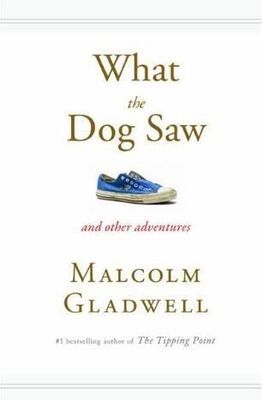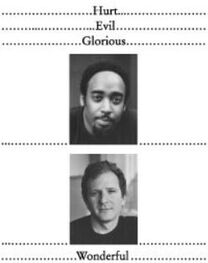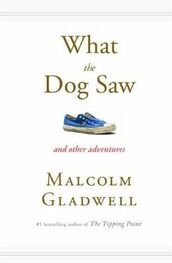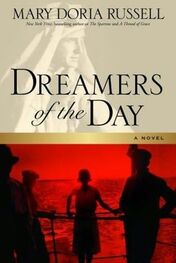There is ample evidence of this principle among America ’s most successful companies. Southwest Airlines hires very few MBAs, pays its managers modestly, and gives raises according to seniority, not “rank and yank.” Yet it is by far the most successful of all United States airlines, because it has created a vastly more efficient organization than its competitors have. At Southwest, the time it takes to get a plane that has just landed ready for takeoff – a key index of productivity – is, on average, twenty minutes, and requires a ground crew of four, and two people at the gate. (At United Airlines, by contrast, turnaround time is closer to thirty-five minutes, and requires a ground crew of twelve, and three agents at the gate.)
In the case of the giant retailer Wal-Mart, one of the most critical periods in its history came in 1976, when Sam Walton “unretired,” pushing out his handpicked successor, Ron Mayer. Mayer was just over forty. He was ambitious. He was charismatic. He was, in the words of one Walton biographer, “the boy-genius financial officer.” But Walton was convinced that Mayer was, as people at McKinsey would say, “differentiating and affirming” in the corporate suite, in defiance of Wal-Mart’s inclusive culture. Mayer left, and Wal-Mart survived. After all, Wal-Mart is an organization, not an all-star team. Walton brought in David Glass, late of the Army and Southern Missouri State University, as CEO ; the company is now ranked No. 1 on the Fortune 500 list.
Procter & Gamble doesn’t have a star system, either. How could it? Would the top MBA graduates of Harvard and Stanford move to Cincinnati to work on detergent when they could make three times as much reinventing the world in Houston? Procter & Gamble isn’t glamorous. Its CEO is a lifer – a former Navy officer who began his corporate career as an assistant brand manager for Joy dishwashing liquid – and if Procter & Gamble’s best played Enron’s best at Trivial Pursuit, no doubt the team from Houston would win handily. But Procter & Gamble has dominated the consumer-products field for close to a century, because it has a carefully conceived managerial system, and a rigorous marketing methodology that has allowed it to win battles for brands like Crest and Tide decade after decade. In Procter & Gamble’s Navy, Admiral Stark would have stayed. But a cross-divisional management committee would have set the Tenth Fleet in place before the war ever started.
Among the most damning facts about Enron, in the end, was something its managers were proudest of. They had what, in McKinsey terminology, is called an open market for hiring. In the open-market system – McKinsey’s assault on the very idea of a fixed organization – anyone could apply for any job that he or she wanted, and no manager was allowed to hold anyone back. Poaching was encouraged. When an Enron executive named Kevin Hannon started the company’s global broadband unit, he launched what he called Project Quick Hire. A hundred top performers from around the company were invited to the Houston Hyatt to hear Hannon give his pitch. Recruiting booths were set up outside the meeting room. “Hannon had his fifty top performers for the broadband unit by the end of the week,” Michaels, Handfield-Jones, and Axelrod write, “and his peers had fifty holes to fill.” Nobody, not even the consultants who were paid to think about the Enron culture, seemed worried that those fifty holes might disrupt the functioning of the affected departments, that stability in a firm’s existing businesses might be a good thing, that the self-fulfillment of Enron’s star employees might possibly be in conflict with the best interests of the firm as a whole.
These are the sorts of concerns that management consultants ought to raise. But Enron’s management consultant was McKinsey, and McKinsey was as much a prisoner of the talent myth as its clients were. In 1998, Enron hired ten Wharton MBAs; that same year, McKinsey hired forty. In 1999, Enron hired twelve from Wharton; McKinsey hired sixty-one. The consultants at McKinsey were preaching at Enron what they believed about themselves. “When we would hire them, it wouldn’t just be for a week,” one former Enron manager recalls, of the brilliant young men and women from McKinsey who wandered the hallways at the company’s headquarters. “It would be for two to four months. They were always around.” They were there looking for people who had the talent to think outside the box. It never occurred to them that, if everyone had to think outside the box, maybe it was the box that needed fixing.
July 22, 2002
WHAT DO JOB INTERVIEWS REALLY TELL US?
Nolan Myers grew up in Houston, the elder of two boys in a middle-class family. He went to Houston ’s High School for the Performing and Visual Arts and then Harvard, where he intended to major in history and science. After discovering the joys of writing code, though, he switched to computer science. “Programming is one of those things you get involved in, and you just can’t stop until you finish,” Myers says. “You get involved in it, and all of a sudden you look at your watch and it’s four in the morning! I love the elegance of it.” Myers is short and slightly stocky and has pale-blue eyes. He smiles easily, and when he speaks he moves his hands and torso for emphasis. He plays in a klezmer band called the Charvard Chai Notes. He talks to his parents a lot. He gets Bs and B-pluses.
In the last stretch of his senior year, Myers spent a lot of time interviewing for jobs with technology companies. He talked to a company named Trilogy, down in Texas, but he didn’t think he would fit in. “One of Trilogy’s subsidiaries put ads out in the paper saying that they were looking for the top tech students, and that they’d give them two hundred thousand dollars and a BMW,” Myers said, shaking his head in disbelief. In another of his interviews, a recruiter asked him to solve a programming problem, and he made a stupid mistake and the recruiter pushed the answer back across the table to him, saying that his “solution” accomplished nothing. As he remembers the moment, Myers blushes. “I was so nervous. I thought, Hmm, that sucks!” The way he says that, though, makes it hard to believe that he really was nervous, or maybe what Nolan Myers calls nervous the rest of us call a tiny flutter in the stomach. Myers doesn’t seem like the sort to get flustered. He’s the kind of person you would call the night before the big test in seventh grade when nothing made sense and you had begun to panic.
I like Nolan Myers. He will, I am convinced, be very good at whatever career he chooses. I say those two things even though I have spent no more than ninety minutes in his presence. We met only once, on a sunny afternoon just before his graduation at the Au Bon Pain in Harvard Square. He was wearing sneakers and khakis and a polo shirt in a dark-green pattern. He had a big backpack, which he plopped on the floor beneath the table. I bought him an orange juice. He fished around in his wallet and came up with a dollar to try to repay me, which I refused. We sat by the window. Previously, we had talked for perhaps three minutes on the phone, setting up the interview. Then I e-mailed him, asking him how I would recognize him at Au Bon Pain. He sent me the following message, with what I’m convinced – again, on the basis of almost no evidence – to be typical Myers panache: “22ish, five foot seven, straight brown hair, very good-looking.:).” I have never talked to his father, his mother, or his little brother, or any of his professors. I have never seen him ecstatic or angry or depressed. I know nothing of his personal habits, his tastes, or his quirks. I cannot even tell you why I feel the way I do about him. He’s good-looking and smart and articulate and funny, but not so good-looking and smart and articulate and funny that there is some obvious explanation for the conclusions I’ve drawn about him. I just like him, and I’m impressed by him, and if I were an employer looking for bright young college graduates, I’d hire him in a heartbeat.
Читать дальше







